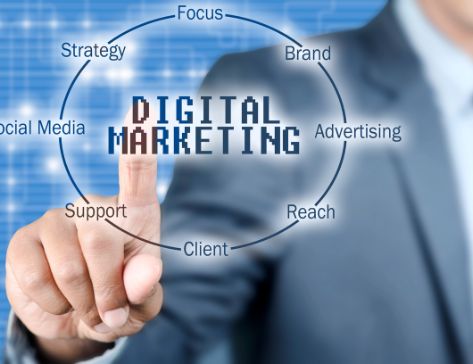
Mastering Real-Time Personalization in Digital Marketing: The Ultimate Guide
Real-time personalization in digital marketing has revolutionized how brands connect with their audiences, enabling marketers to deliver individually tailored experiences that respond instantly to customer behaviors, preferences, and contexts. Unlike traditional personalization that relies on historical data and predefined segments, real-time approaches leverage live data streams, advanced analytics, and automated decision-making to create dynamic, contextually relevant experiences at the moment of interaction. This comprehensive guide explores the transformative potential of real-time personalization and provides actionable strategies for implementing these powerful techniques in your marketing programs.

Why Traditional Personalization Falls Short
While basic personalization tactics like adding a customer’s name to an email or recommending products based on past purchases have become standard practice, these approaches often fail to meet rising customer expectations. Traditional personalization methods typically suffer from several limitations that diminish their effectiveness in today’s fast-paced digital environment:
- Reliance on outdated information: Using historical data that may no longer reflect current customer interests or needs
- Batch processing delays: Operating on schedules that create lags between data collection and experience delivery
- Limited contextual awareness: Failing to account for situational factors like location, device, or time of day
- Rigid segmentation: Placing customers in static groups that don’t adapt to changing behaviors
- Channel silos: Creating disconnected experiences across different touchpoints
Organizations implementing real-time personalization report an average 25-35% increase in conversion rates and 20-30% improvement in customer engagement compared to those using only basic personalization techniques, according to recent industry research.
The Real-Time Personalization Framework
Effective real-time personalization operates on a continuous cycle of data collection, analysis, decision-making, and experience delivery:
1. Real-Time Data Collection
What it involves: Capturing customer signals across touchpoints as they occur
Key data types:
- Behavioral data (clicks, views, searches)
- Contextual data (location, device, time)
- Transactional data (purchases, cart updates)
- Environmental data (weather, events, trends)
2. Instant Analysis
What it involves: Processing incoming signals to derive meaning and intent
Key capabilities:
- Pattern recognition
- Intent prediction
- Anomaly detection
- Sentiment analysis
3. Dynamic Decision-Making
What it involves: Determining the optimal experience based on real-time insights
Decision factors:
- Customer preferences and history
- Current context and behavior
- Business rules and priorities
- Performance predictions
4. Immediate Experience Delivery
What it involves: Presenting the personalized experience without perceptible delay
Delivery mechanisms:
- Dynamic content rendering
- Adaptive user interfaces
- Contextual messaging
- Personalized recommendations
High-Impact Applications of Real-Time Personalization
Real-time personalization can transform virtually every aspect of digital marketing:
1. Dynamic Website Personalization
Instantly adapt website content, layouts, offers, and navigation based on visitor behavior, referral source, location, and other contextual factors. This creates a unique experience for each visitor that evolves throughout their session as they interact with your site.
2. Behavioral Triggered Messaging
Automatically send highly relevant messages across channels (email, SMS, push notifications) based on specific customer actions or inactions. These messages arrive at precisely the right moment to influence decisions and drive conversions.
3. Contextual Product Recommendations
Deliver product suggestions that respond not just to purchase history but to the customer’s current browsing behavior, search queries, cart contents, and even external factors like weather or local events.
4. Adaptive Customer Journeys
Create customer journeys that automatically adjust based on individual responses and behaviors rather than following predetermined paths. These dynamic journeys evolve in real-time to provide the most effective path to conversion for each customer.
5. In-Session Offers and Incentives
Present personalized promotions and incentives based on real-time signals of purchase intent or abandonment risk. These timely offers can significantly increase conversion rates and average order values.
6. Omnichannel Experience Orchestration
Coordinate personalized experiences across channels in real-time, ensuring that interactions on one channel inform and enhance experiences on others immediately rather than after processing delays.
7. Conversational AI and Chatbots
Deploy intelligent assistants that adapt their responses and recommendations based on the evolving conversation context, providing truly personalized support and guidance.
Case Study: E-commerce Retailer
A leading online retailer implemented a comprehensive real-time personalization strategy across their digital touchpoints. The system integrated data from their website, mobile app, email platform, and customer service systems to create a unified view of customer interactions.
Implementation approach:
- Deployed real-time data collection across all digital properties
- Implemented a machine learning engine that predicted purchase intent from browsing patterns
- Created a decision engine that determined optimal content and offers in milliseconds
- Developed dynamic templates that adapted to individual customer preferences
Results:
- 37% increase in conversion rates
- 42% improvement in average session duration
- 28% reduction in cart abandonment
- 31% increase in average order value
Implementing Real-Time Personalization: A Step-by-Step Approach
Follow this systematic framework to successfully implement real-time personalization in your marketing programs:
Step 1: Assess Your Personalization Readiness
Begin by evaluating your current capabilities and identifying gaps:
- Audit existing data collection and integration processes
- Evaluate the real-time capabilities of your marketing technology stack
- Assess your team’s skills and knowledge related to personalization
- Review your content creation and management processes
- Identify high-value opportunities for real-time personalization
Output: Personalization readiness assessment with prioritized improvement areas
Step 2: Develop a Real-Time Data Strategy
Create a comprehensive plan for collecting and activating real-time data:
- Identify the critical data points needed for personalization
- Implement real-time data collection across touchpoints
- Develop a unified customer profile that updates in real-time
- Establish data governance protocols and privacy controls
- Create processes for data quality monitoring and management
Output: Real-time data architecture and implementation plan
Step 3: Select and Implement the Right Technology
Choose the appropriate tools and platforms to enable real-time personalization:
- Evaluate customer data platforms (CDPs) with real-time capabilities
- Assess personalization engines and decision management systems
- Consider real-time analytics and machine learning platforms
- Review content management systems with dynamic content capabilities
- Ensure proper integration between selected technologies
Output: Integrated technology stack that supports real-time personalization
Step 4: Create a Modular Content Strategy
Develop a content approach that enables dynamic assembly and delivery:
- Break content into reusable components that can be dynamically combined
- Establish metadata frameworks for content discovery and selection
- Create templates that support real-time content insertion
- Develop content variations for different contexts and scenarios
- Implement content performance tracking for optimization
Output: Modular content library and management system
Step 5: Define Personalization Rules and Algorithms
Establish the decision logic that will drive your personalization efforts:
- Create business rules for basic personalization scenarios
- Develop machine learning models for more complex personalization
- Define the triggers and conditions for real-time interventions
- Establish prioritization frameworks for competing personalization options
- Create fallback scenarios for when personalization data is limited
Output: Comprehensive decision framework for real-time personalization
Step 6: Implement Testing and Optimization Processes
Create systems to continuously improve personalization effectiveness:
- Establish A/B/n testing protocols for personalization approaches
- Implement multivariate testing for complex personalization scenarios
- Develop performance metrics and KPIs for measuring impact
- Create feedback loops that inform personalization refinements
- Implement automated optimization where appropriate
Output: Testing and optimization framework for continuous improvement
Step 7: Scale and Expand Your Personalization Program
Gradually increase the scope and sophistication of your personalization efforts:
- Start with high-impact, lower-complexity use cases
- Expand to additional channels and touchpoints over time
- Increase the granularity of personalization as capabilities mature
- Incorporate additional data sources to enhance personalization
- Develop more advanced algorithms and decision logic
Output: Roadmap for scaling personalization across the customer experience
Pro Tip: When implementing real-time personalization, focus on creating value for the customer rather than just demonstrating technical capabilities. The most effective personalization solves customer problems, simplifies decisions, or enhances experiences in meaningful ways. Always ask: “How does this personalization make the customer’s experience better?” rather than just “Can we personalize this?”
Key Technologies Enabling Real-Time Personalization
Several advanced technologies power effective real-time personalization systems:
Customer Data Platforms (CDPs)
Centralized systems that unify customer data from multiple sources, create persistent customer profiles, and make this data available to other systems in real-time for activation.
Real-Time Decision Engines
Specialized platforms that determine the optimal content, offer, or experience to deliver to each customer based on real-time data, business rules, and prescriptive analytics.
Machine Learning and AI
Advanced algorithms that can predict customer preferences, identify patterns in behavior, and continuously optimize personalization approaches based on performance data.
Edge Computing
Distributed computing architecture that processes data closer to where it’s generated, reducing latency and enabling truly instantaneous personalization.
API-First Platforms
Systems designed for seamless integration and data exchange, allowing real-time information flow between different components of your marketing technology stack.
Overcoming Common Challenges
Address these typical obstacles to successfully implement real-time personalization:
Data Silos and Integration Issues
Solution: Implement a customer data platform that unifies information across sources, establish real-time data pipelines, and prioritize systems with robust API capabilities.
Performance and Latency Concerns
Solution: Utilize edge computing, implement efficient caching strategies, and optimize decision algorithms to deliver personalized experiences without perceptible delays.
Content Production Bottlenecks
Solution: Adopt a modular content approach, implement content generation tools, and establish clear production workflows that support the creation of personalization variants.
Privacy and Compliance Challenges
Solution: Implement robust consent management, adopt privacy-by-design principles, and ensure transparency in how personalization data is collected and used.
Measurement Complexity
Solution: Develop a comprehensive measurement framework that captures both immediate performance metrics and longer-term business impact, and implement attribution models that account for personalization effects.
Future Trends in Real-Time Personalization
Stay ahead of the curve by monitoring these emerging developments:
- Hyper-Contextual Personalization: Experiences that adapt not just to who the customer is but to their precise situation, incorporating factors like emotional state, immediate surroundings, and current activities
- Predictive Personalization: Systems that anticipate customer needs and preferences before they’re explicitly expressed, enabling proactive rather than reactive personalization
- Voice and Visual Personalization: Experiences that adapt to voice commands and visual cues, creating more natural and intuitive personalized interactions
- Cross-Reality Personalization: Unified personalization across physical and digital environments, creating seamless experiences that bridge online and offline worlds
- Autonomous Experience Optimization: Self-learning systems that continuously test and refine personalization approaches without human intervention
Conclusion
Real-time personalization represents a quantum leap forward in marketing effectiveness, enabling brands to create truly individualized experiences that respond instantly to customer needs, preferences, and contexts. By moving beyond static, segment-based approaches to dynamic, moment-by-moment personalization, marketers can dramatically improve engagement, conversion, and customer satisfaction.
While implementing real-time personalization requires investment in technology, processes, and skills, the returns—enhanced customer experiences, increased marketing efficiency, and stronger business results—make it well worth the effort. As consumer expectations continue to rise and competition intensifies, the ability to deliver personalized experiences in real-time will become not just a competitive advantage but a fundamental requirement for business success.
By following the structured implementation approach outlined in this guide and addressing common challenges proactively, marketers can transform their personalization capabilities from basic, rule-based tactics to sophisticated, real-time experiences that create meaningful connections with customers. The future belongs to brands that can make each customer feel understood and valued in the moment—and the right marketing tools and strategies make this ambitious goal achievable.


